With the elements assaulting your bike and body both from the sky and the ground, riding in the depths of winter or in the driving rain can be downright miserable. Thankfully a set of fenders can make riding in inclement weather much more bearable, shielding you from the spray of water, mud, and grime.
While some riders may be hesitant in adding fenders to their bike, concerned more about the aesthetics of their pride and joy, there’s little denying the advantages of running a set.
There are a few things to take into account before making a purchase of bicycle fenders. This guide was created to help you get started when selecting which bicycle fenders are best for you.
Why should you use fenders?
Mounting a quality set of bicycle fenders, also known as mudguards, to your bike will have a number of benefits. For most, reducing the amount of water, mud, and grime that sprays up into your face, all over your bike and your backside is enough to warrant their use.
In reducing the amount of grime sprayed onto your bike, fenders carry the added benefit of reducing the amount of grit that can work into your bikes' moving components when riding in wet conditions. This could end up saving you money by prolonging the life of your bike's components.
Lastly, a set of fenders will keep other riders around you clean. If you’ve taken part in a rain-sodden group ride, you’ll understand how much happier you and your riding mates will be with the reduced spray. Keeping this road spray out of yours and everyone else's vision is undoubtedly safer too.
Fender Types
Bicycle fenders are not a one-size-fits-all accessory. They not only differ depending on your riding discipline and bike type, some bikes may not be compatible with a set of fenders at all.
There will typically be two methods for attaching fenders to your bike and for the majority of bikes, fitment shouldn't be an issue but it’s important to inspect your bike to ensure there is enough wheel, brake and frame clearance to accommodate your fenders of choice. Typically 15 - 20mm of clearance is all that is needed, however, it is worth double checking with the bike manufacturer to be sure.
Bolt-On Fenders
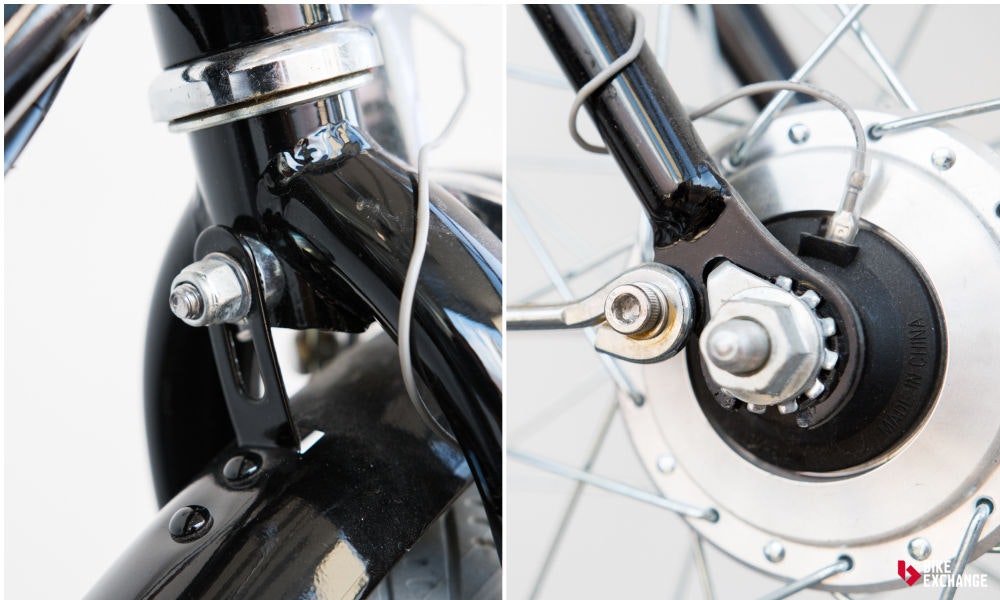
Bolt-on fenders are traditionally found on touring, commuter, vintage, cruisers, cyclocross, endurance road bikes and some lower-end mountain bikes. These bikes will often have pre-drilled holes or eyelets for screwing the fenders in place. Bolt-on fenders are designed to be more permanent options which makes them a popular choice for those using their bike year-round regardless of the weather conditions.
The main disadvantages of bolt-on fenders is that they will not fit a bike that lacks the necessary mounts and often greater frame clearance is required to fit them.
If your bike is suitable, the key advantage of a bolt-on fender setup is how secure they are. Particularly helpful if the roads, paths, or trails you’re riding on are in poor condition. The longer length of these fenders means that they also offer the most coverage, often keeping your feet and legs dry and more importantly, deflecting water and grime away from your brakes and drivetrain.
Fitting bolt-on mudguard can be done using simple tools, so you don’t have to be a seasoned bike mechanic to get the job done, however it will take a bit of time to set them up properly.
Clip-on Mudguards
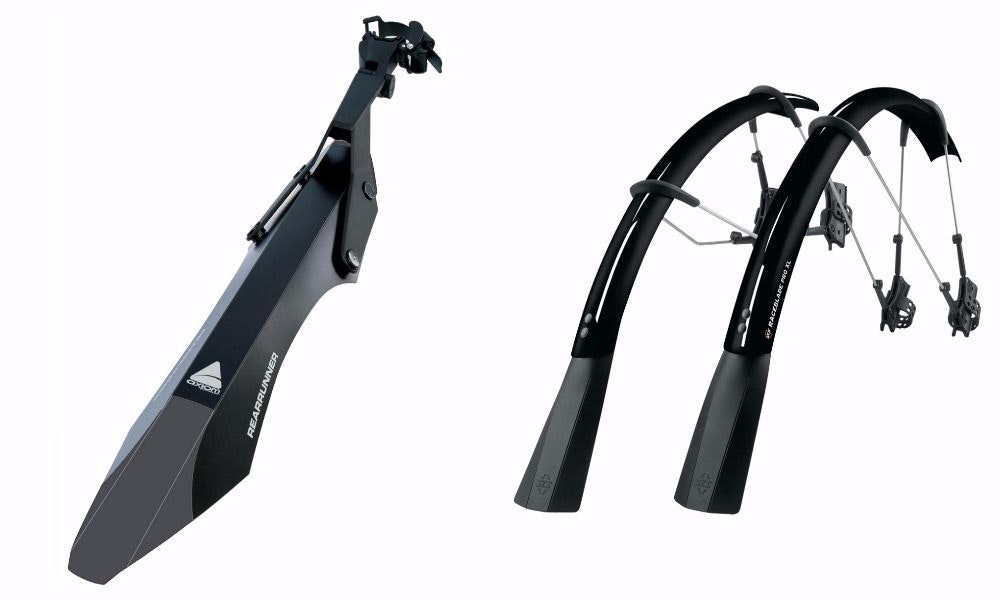
If your bike doesn’t have pre-drilled mounting points or eyelets, or your bike lacks the required frame and brake clearance to run bolt-on fenders, then a clip-on variant has the key benefit of fitting most bikes. They are also typically lighter weight than permanent fenders, which is sure to please more performance orientated riders.
Most clip-on style fenders will have good coverage, ensuring they shield you from the worst of the spray, however full-length bolt-on options will typically offer more coverage.
Clip-ons will typically attach to the front fork, seatpost, downtube or rear seatstay via zip ties or simple and removable rubber, plastic or velcro mounts. This means installation is relatively quick and usually tool-free. This makes these fenders a sound option if you have multiple bikes you wish to alternate between or plan to ride fender-free whenever the weather is clear.
Bike Choice and Riding Style
Fender Types for Mountain Biking
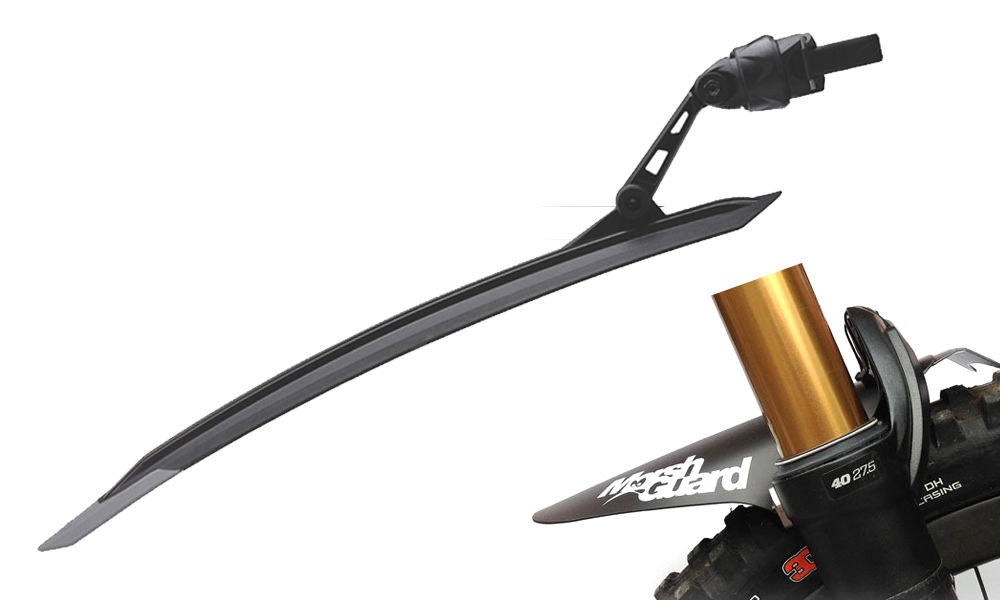
Grime is often part and parcel of hitting the trails. When riding in wet and muddy conditions, installing mudguards can add to the quality of your ride by keeping you dry and keeping debris out of your eyes.
Mountain bike specific fenders will typically be more robust in construction to deal with the harsh terrain that riders cover when out riding. In addition to mud, a mountain bike mudguard must be effective at deflecting rocks, sticks and everything else that comes with riding off road.
A minimalistic front fender is a popular option for most riders these days. Typically positioned under the crown or on the downtube, these fenders stay out of the way of your suspension and sit at a perfect position to keep your vision clear. Popular options include the widely-copied Marsh guard which is favoured due to it robust, minimal and lightweight design.
For those wanting riders to follow behind, or shield their backsides from being covered in dirt, a seatpost mounted mudguard is your best bet. Mounting on the seatpost, high off the wheel, this allows clearance for suspension and larger tyres that feature on mountain bikes. They do a great job at deflecting the bulk of the mud and water from spraying up your back, or all over the face of your riding mate following you down the trail. Just be wary that these rear mudguards may not be suitable if you bike features a dropper seatpost.
Fender Types for Road Bikes
For road cyclists considering mudguards, the unfortunate reality is that only a small amount of bikes will be able to take a bolt-on fender from the factory. When there are factory mounts presents, such as those available on more endurance and adventure based models from the likes of Trek and Giant, they’re usually proprietary. Whilst this ensures a good solid fit, there are few aftermarket bolt-on options that suit the non-standard eyelets. Whilst not offered factory standard, there are excellent road bike specific options available to keep you protected.
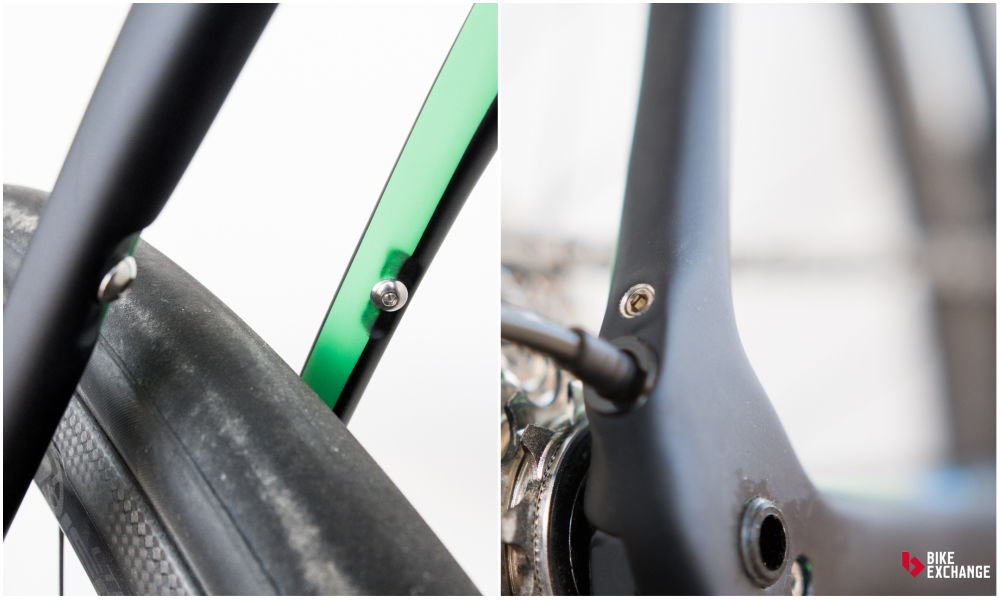
Snap-on seat mudguards, are a popular option. Brands such as Ass saver and Velox have been creating lightweight and inconspicuous clip-on mudguards for road use for a number of years and are a common sight on many pro and recreational road bikes. Whilst they are minimalistic, they still do an acceptable job at protecting you from the worst of the water and grime spray. They typically attach to your seat rails with no tools required and can be quickly removed and stored when not in use.
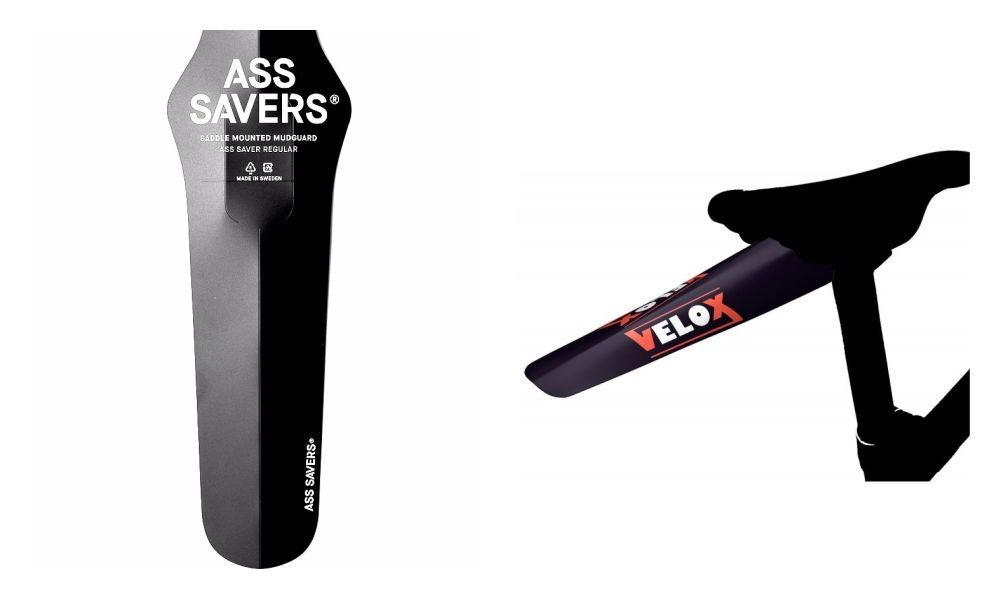
If you’re after more coverage, a full-length clip-on fender may be the answer. One such option is the Topeak Defender, which is widely considered the industry standard when it comes to removable fenders for road bikes, thanks to its simplistic design that’s easy to mount and its long-term durability.
Fender Types for Urban Bikes
Full-length fenders are commonplace on urban bikes. Being a permanent fixture on the bike, this ensures year round protection for riders and their bikes. Fenders such as the commuter series from Zefal are popular due to their robust construction and secure fit once mounted.
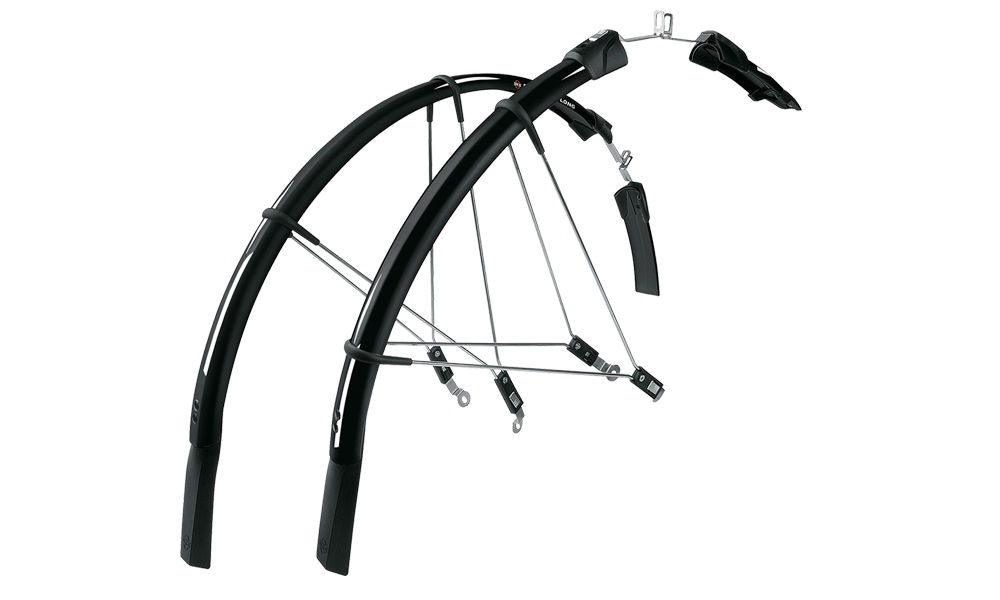
What makes a good fender?
There are a couple of considerations worth taking into account when looking for a fender. The first of which is ensuring the coverage is suitable for your needs. Whilst a longer fender will be more effective at channeling water and keeping it from spraying up, a longer fender may not be suitable depending on your bike and riding style. There are multiple lengths available, such as shorter more inconspicuous options for road and mountain biking.
The rigidity and build quality of the fender are also important. The last thing you want is for your new mudguards to fail prematurely, or rattling and rubbing on your tyre as you ride along. Materials used in the construction of bike fenders can range from cheap plastic and metal to more costly carbon and even wood variants. Like many things, the cost of a mudguard can be a good indicator of quality. It’s not a foolproof measure, though, if possible, it’s worth heading into your local bike store and seeing the fender mounted, or feeling it in your hands before making a buying decision.
Finally, and most importantly, correct and secure installation of a bike fender will have the biggest impact on how effective they are when used. If you’re not confident in fitting the guards yourself, more often than not, your local bike store will be able to mount them
**Follow BikeExchange: [Email](http://www.bikeexchange.co.nz/subscribe) | [Facebook](https://www.facebook.com/BikeExchange.com.au) | [Twitter](https://twitter.com/bikeExchange) | [Instagram](https://www.instagram.com/bikeexchange/) | [YouTube](https://www.youtube.com/user/BikeExchangeTV) | [STRAVA](https://www.strava.com/clubs/BikeExchange)**





